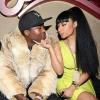With Her Body Lies a Restorative Treasure: Reflecting on "Getting Mother's Body"
By The UnknownOctober 19, 2016 - 00:00

Even though Parks makes the repossession and reclamation of Mother the object of Beede’s journey, the Beede family is nevertheless very alienated from mother views her life as dysfunctional. Billy, especially appears to be alienated from mother. She contends that Willa Mae was “a liar and a cheat” who got “locked up in jail every time she turned around. Always talking big and never amounting to nothing” (Parks 9). She says that she doesn’t mind if Willa Mae’s grave is “paved over” proclaiming that “Willa Mae can stay where she’s at” once she retrieves “the treasure she left me” (44, 106). Billy makes it obvious that she feels alienated from Mother when she insists that “I ain’t no Willa Mae” (18) Dill Smiles believes that “Billy was glad when Willa Mae passed” (22).








